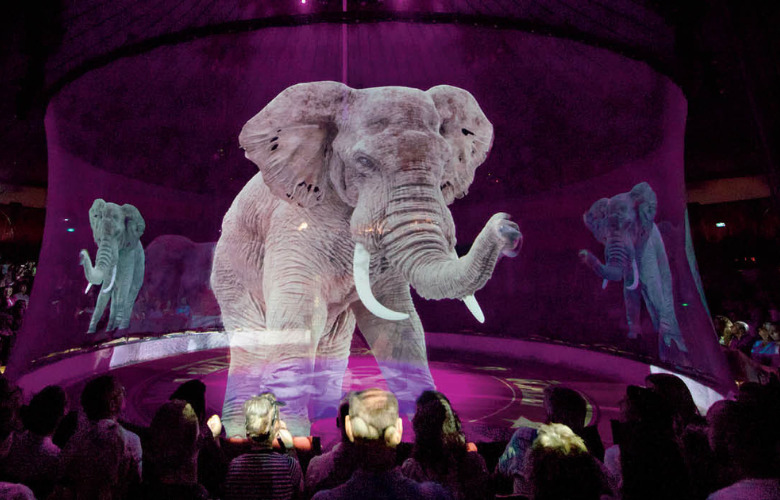
Since the Nineteen Nineties, the German Circus Roncalli began phasing out using wild animals in their shows. However, thanks to modern technology, they were still able to create amazing animal performances without mistreating innocent creatures. Circus Roncalli began incorporating massive animal holograms into their shows. Which, in many ways, are just as spellbinding to look at as the traditional live animal performances.
Founded in 1976, Circus Roncalli was one of the first circuses in the world to phase out the use of live animals, back in the Nineteen Nineties.
The German circus then became the first circus worldwide to present a hologram show.
First Roncalli began using live horses, instead of wild animals like elephants. Then, even the horses were replaced entirely by an immersive light show comprised of holographic wild animals.
“In 2018, we celebrated 250 years of classical circus. So, we wanted to make a statement. We wanted to keep the traditional elements of circus performances, and yet show how traditions have and can evolve,” explained Markus Strobl, Roncalli’s head of media, digital and communications in an interview in 2019.
Circus Roncalli employs a holographic system to add their former element of presenting wild animals throughout their show.
While the holograms have fully replaced live animals at the Roncalli circus, they only complement the performances of their human attractions.
Gensi the Clown, for example, appears both as a giant projection, and as himself in the flesh. And, of course, there is no shortage of breath-taking acrobatic acts.
Roncalli partners with Bluebox, which installed Optoma technology inside the large circus arena.
Thanks to 11 laser projectors placed around the center ring, the holographic animals and other elements come to life.
The 3D holographic images fill the whole arena which is 32 meters (105ft) wide and 5 meters (16ft) deep.
Together, the 11 projectors create a 360-degree, 3D show, which boasts giant elephant holograms, horses, and even a giant goldfish.
This is a vast improvement over old circuses, which to my knowledge never offered to see giant goldfish in action.
The lack of real elephants, a staple of Circus Roncalli’s show for far too long, doesn’t detract from the experience.
The holograms create a different type of visual feast, but one that’s stunning in its own unique way. And it still makes the circus a destination experience.
There aren’t many places you can go to see this kind of full-room holographic show. At least not yet.
Circus Roncalli might very well be the way forward for all circuses, especially considering that the holograms are far more cost efficient in the long term, as well as safer to be around and maintain.
Most importantly, it allows the circus to continue to entertain people with outstanding, never before seen animal performances without mistreating actual, real-life, innocent animals.
Speaking of the technology advance, the president of Animal Defenders International, Jan Creamer, told the online magazine The Dodo: “This is the future of circus – a performance everyone can enjoy and for which intelligent, sentient beings are not used and depicted as objects of entertainment.”
Smithsonian Magazine: German Circus Uses Stunning Holograms
The House of Dancing Water… Remembering a Masterpiece
Le Rêve in Las Vegas: A Tribute


Liam Klenk was born in Central Europe and has since lived on four continents. Liam has always been engaged in creative pursuits, ranging from photography and graphic design, to writing short stories and poetry, to working in theatre and shows. In 2016, Liam published his first book and memoir, 'Paralian'.
Read Full Profile© 2021 TheatreArtLife. All rights reserved.

Thank you so much for reading, but you have now reached your free article limit for this month.
Our contributors are currently writing more articles for you to enjoy.
To keep reading, all you have to do is become a subscriber and then you can read unlimited articles anytime.
Your investment will help us continue to ignite connections across the globe in live entertainment and build this community for industry professionals.